Out of the three study sites (Kintyre, Isle of Skye and Orkney), Orkney is the one in which the pups arrive the earliest, normally by mid June. Consequently, it also tends to be the site in which most, if not all pups, will have been born sometime by the start of July. Because this is our 4th season in Orkney and I have been working on matching seals from this area for a few years, I do by now have a very good knowledge of the seals that are found at the monitored sites here. It also helps that the haulout sites themselves are not massive in numbers, making the catalogue of seals under 200 animals for this area. This is not the case in our study site in Isle of Skye, Loch Dunvegan, for which the catalogue currently holds over 500 seals.
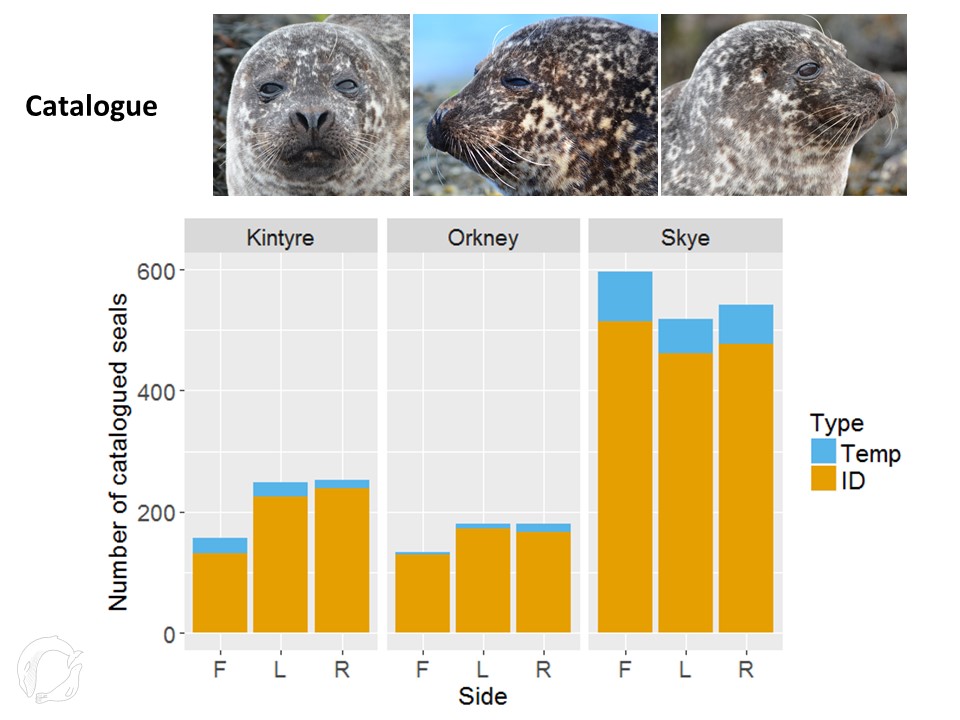
The advantage of recognizing the seals is that we can identify them on the spot as we collect the data in the field, which is very safisfying. Every photograph that gets taken in the field is subsequently entered in an excel data table, so that we can store the metadata associated with each photograph. Each photograph will be graded for its quality, and we will make a note if what we can see is the right, the left or the front side of the seal’s head. That is because the pattern will be different on each side, so technically we end up with three different catalogues.

We will also note whether the seal is associated with a pup or not, and whether we can see the pup in the photograph or if it is suckling. Other relevant information that will be noted is if we can see a seal is pregnant, if we can sex the individual or if there are any significant or unusual injuries.
Keeping track of who is at the haulout sites on a daily basis means we can monitor in situ not only who is present that season, but also which females are likely to be pregnant and which ones are having pups and when. The first pup arrived on June 12th in Widewall Bay (South Ronaldsay), belonging to female Or075. The last one was on July 1st, from Or026 (aka Pirate), who, coincidentally, was also the last female to pup last year.
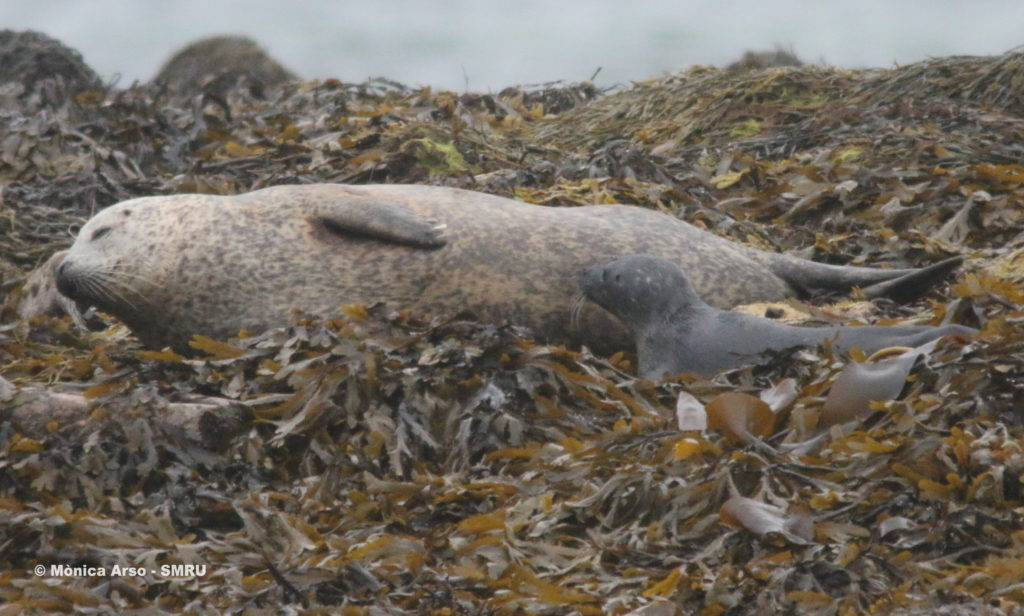
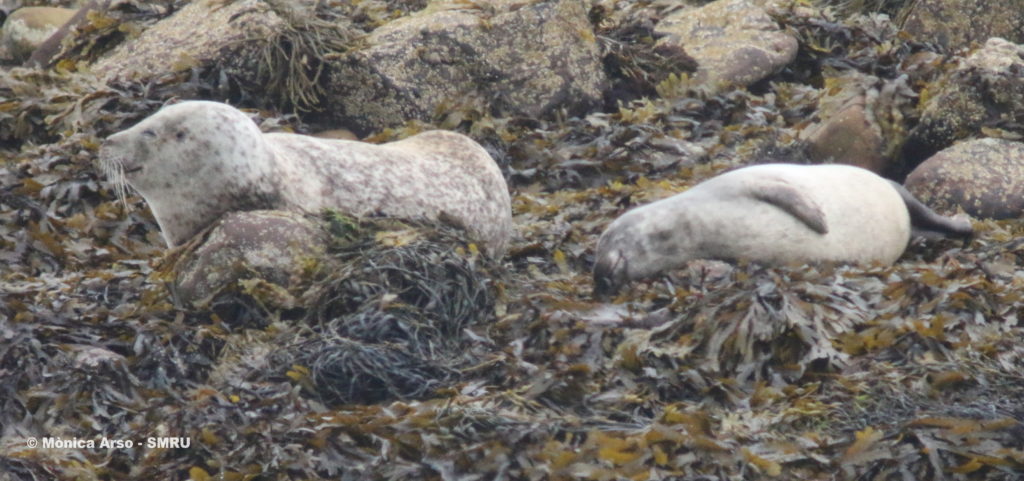


The pups are rapidly gaining weight with the fat-rich milk from their mothers. In just a couple of weeks from now most of the pups will be weaned, especially those born earlier in the season.


As days go, the females will undertake foraging trips during lactation, to support its energetic costs. The pups will accompany them in many of those occasions, but they will also stay behind and wait for their return on shore. Some pups can be seen resting, while others will spend time in the water, or will be checking on other females and other pups, sometimes calling out. When the females return, they will look for their pups, checking on any sleeping pup around until they find theirs.
On July 8th, I spotted female Or007 approaching a haulout site from the water. She can be easily recognized from the distance because she has some scarring around the neck from some debris that got entangled around her neck sometime in the past. There is no debris left now, just a scar. This haulout site is pretty small, normally holding around 10 to 20 seals maximum. On arrival, Or007 first headed towards a mum pup pair, Or044 (aka “Butterfly”) and her pup, and checked on the pup.

Not recognizing it as her pup, she then went on to check on another mum pup pair, this time Or135 and her pup. Wrong pup again… although the pup was quite interested and had intentions to follow this different seal into the water!
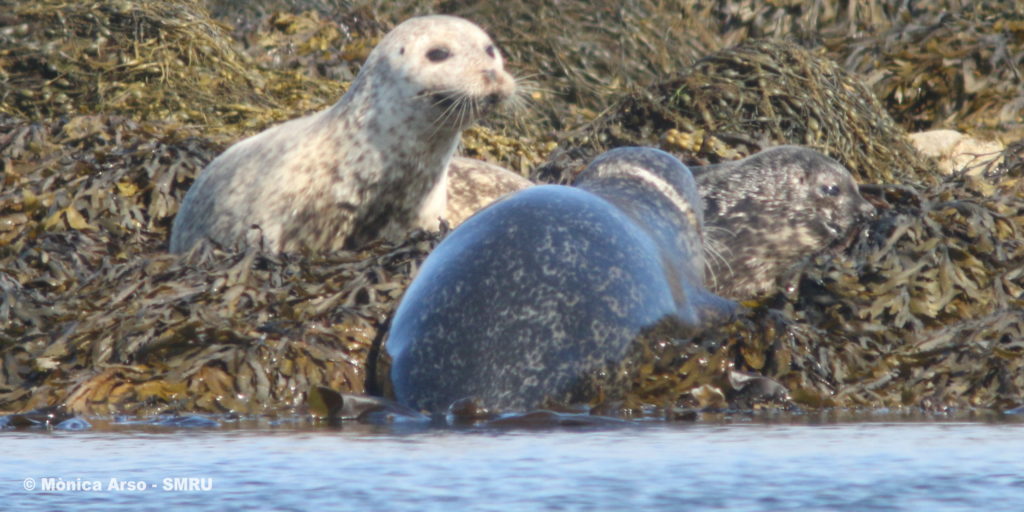
Then she went onto checking a sleeping pup nearby and … hurray! Third time lucky as she finally found her pup, who was just snoozing, completely unaware of what was going on. After some nose-to-nose interaction, mum positioned herself so that the pup could suckle.
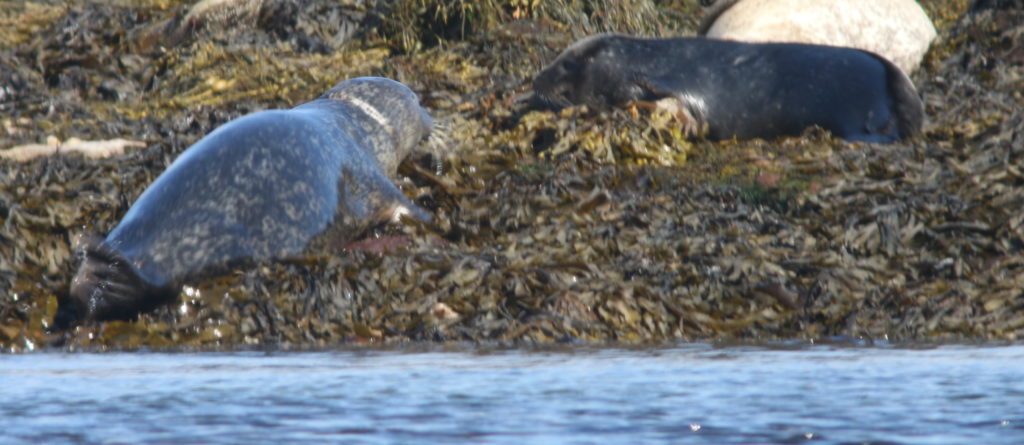
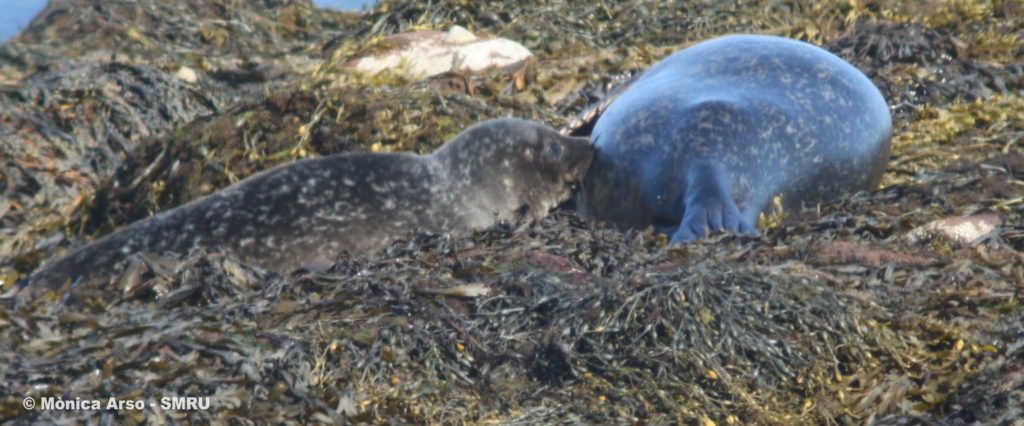
And here is a short video of Or007 looking for her pup on that day:
The following day, July 8th, Or007 must have gone again on a foraging trip, as I spotted her pup on a nearby haulout site having a rest after checking the seals that were around.
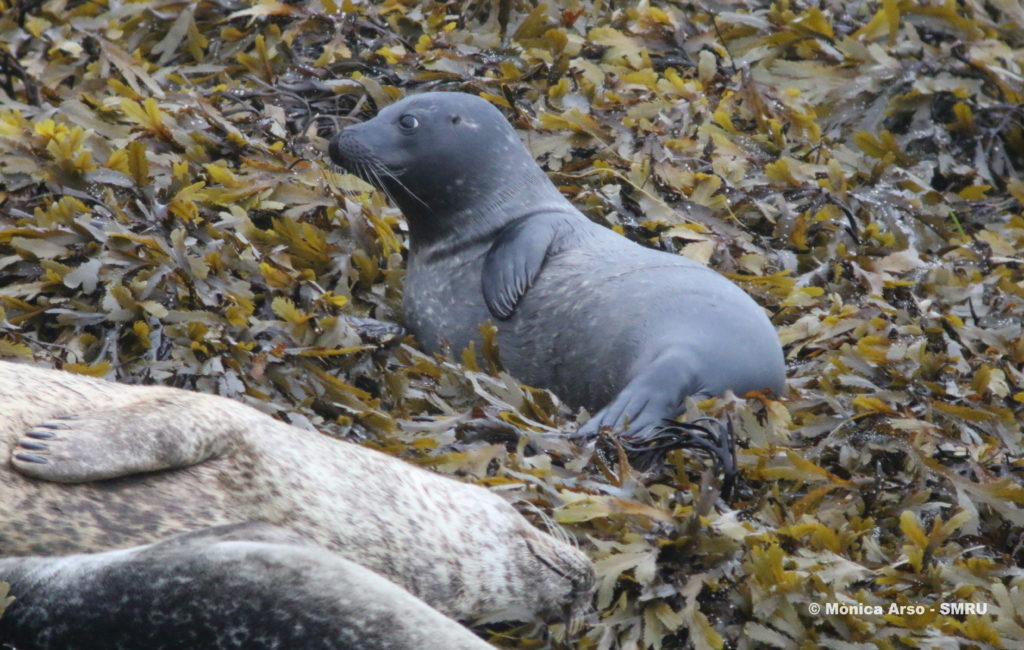
For the next three weeks we will keep on monitoring the mum pup pairs at the haulout sites. A part from those, there are also juveniles, adult males and adult females that have not had a pup this year. The data we collect on them (i.e. whether they are present or not) will help us learn more about the mortality rates in different study sites, to see what might be behind the contrasting trajectories in harbour seal numbers in different areas of Scotland.
Written by Monica
